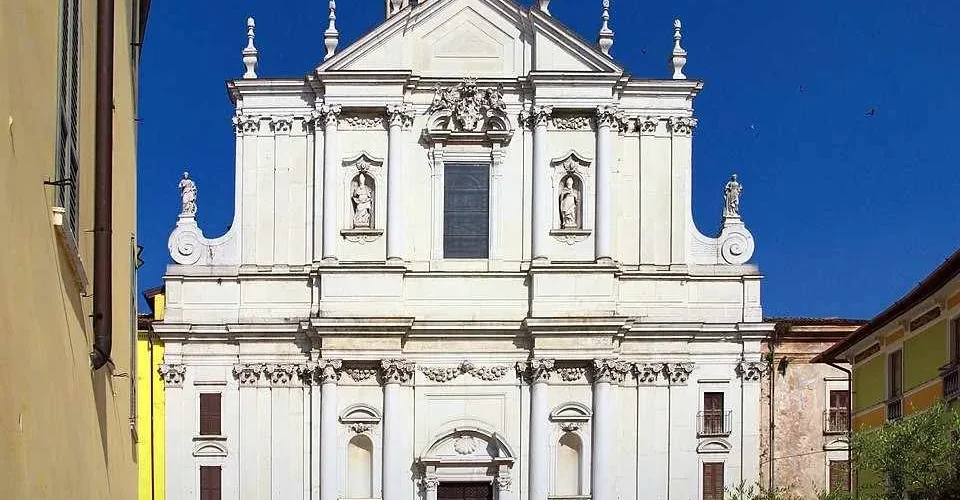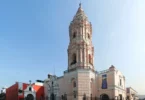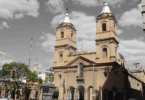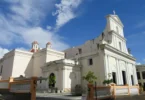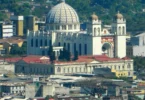Introduction
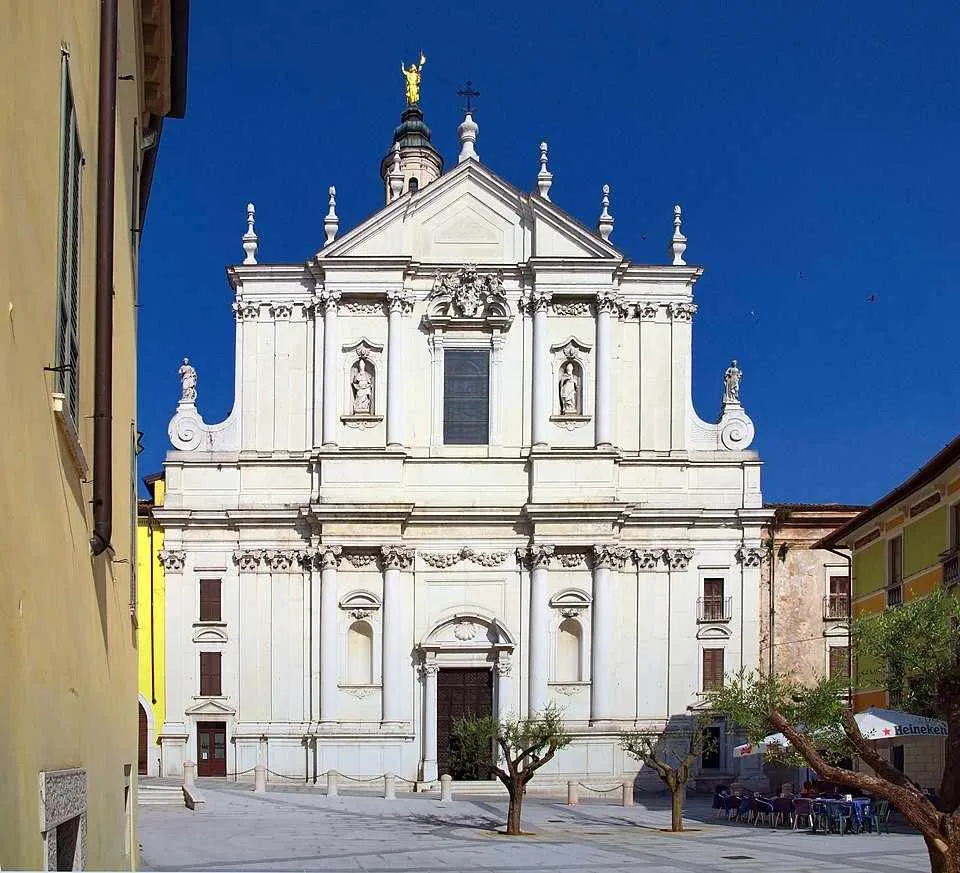
The Basilica of San Giovanni Battista, also known as the Church of the Nativity of San Giovanni Battista, or more simply the Church of San Giovanni Battista, is a prominent Catholic place of worship located in Lonato del Garda, a town in the province of Brescia, Italy. It serves as the principal parish church of the town and is an essential center for Catholic life in the region. The basilica is situated within the Diocese of Verona, and it is part of the Vicariate of Lake Bresciano, an ecclesiastical district encompassing the area around Lake Garda in northern Italy. This historic church is dedicated to Saint John the Baptist, whose feast day is celebrated annually on June 24, and plays a key role in the spiritual and cultural life of the local community. The church’s architectural beauty, religious significance, and historical importance make it a noteworthy landmark in the region.
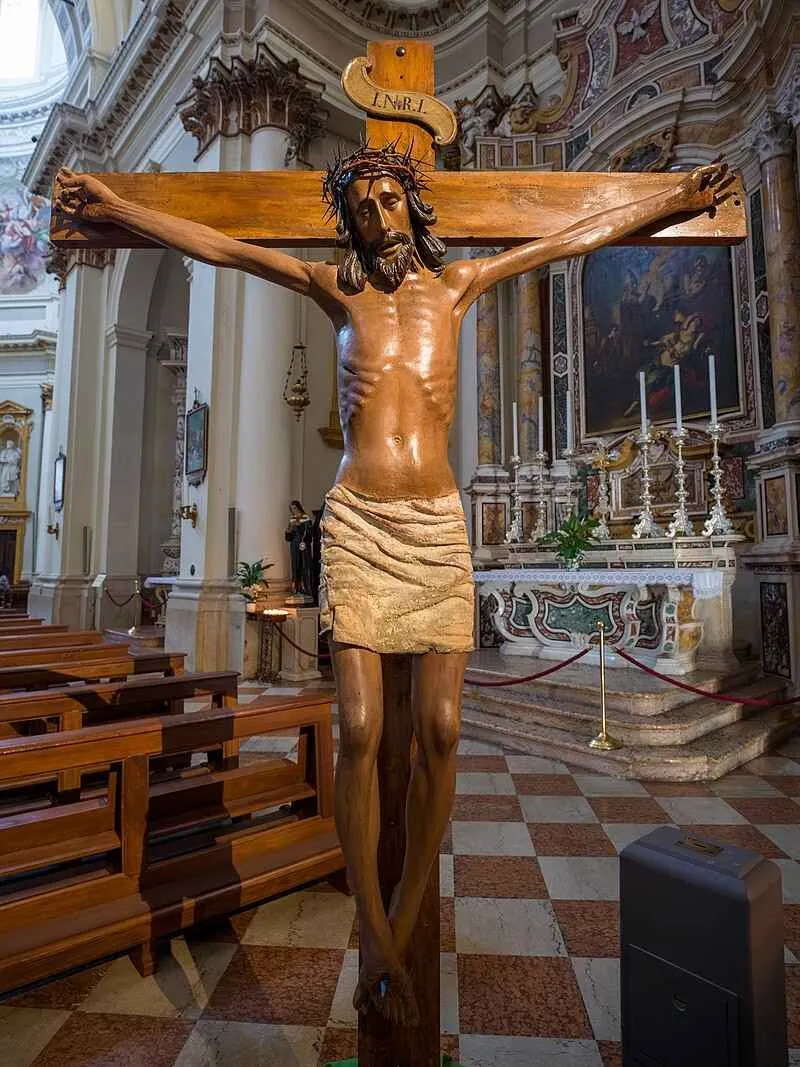
The Basilica of San Giovanni Battista in Lonato del Garda has a rich history that spans several centuries, marked by reconstruction, consecration, and recognition by the Catholic Church.
Early History and Establishment
The origins of the church date back to the 12th century, when in 1145, Pope Eugene III recognized the parish church of Lonato as an important collegiate church. Prior to the construction of the Basilica of San Giovanni Battista, the town’s main parish church was the Church of San Zenone, which was unfortunately destroyed in 1339. This loss prompted the construction of a new church dedicated to Saint John the Baptist in the heart of Lonato. This new church became the central place of worship for the community.
Expansion and Renovation
The church underwent significant expansions starting in 1488, with further efforts to enlarge and enhance its structure over the following centuries. This period of growth culminated in 1540, when the church was reconsecrated by Bishop Gian Matteo Giberti of Verona on October 15, 1540. The reconsecration marked an important moment in the church’s history, solidifying its status as a key religious center in the region.
Baroque Reconstruction
In the 18th century, the church underwent another major transformation. Between 1738 and 1762, the building was reconstructed under the direction of architect Paolo Soratini, who designed the church in the Baroque style. Unfortunately, Soratini passed away before the completion of the project, but the church was finished in his absence. On October 22, 1780, the church was formally consecrated by Bishop Giovanni Morosini of Verona, marking the completion of this grand renovation.
Modern Developments
In the 20th century, the church underwent further updates to maintain its beauty and functionality. In 1937, the flooring of the presbytery was redone, and in 1979, the flooring of the main hall was also renovated to preserve its historical integrity while adapting to modern needs.
Recent Recognition and Honors
The Basilica of San Giovanni Battista reached a significant milestone in 1980 when Pope John Paul II conferred the title of minor basilica on the church, recognizing its religious importance and historical value. This honor elevated the church’s status within the Catholic Church and highlighted its significance as a center of worship in the region. Additionally, in 2025, as part of the celebrations for the Holy Year, the church was awarded the title of Jubilee Church. This designation reflects the church’s longstanding importance and its role in the spiritual life of the faithful, particularly during the Holy Year celebrations. Through its long and varied history, the Basilica of San Giovanni Battista has undergone numerous changes, but it has consistently remained an important religious and cultural landmark in Lonato del Garda.
Architecture of Basilica of St. John the Baptist Lonato del Garda, Italy
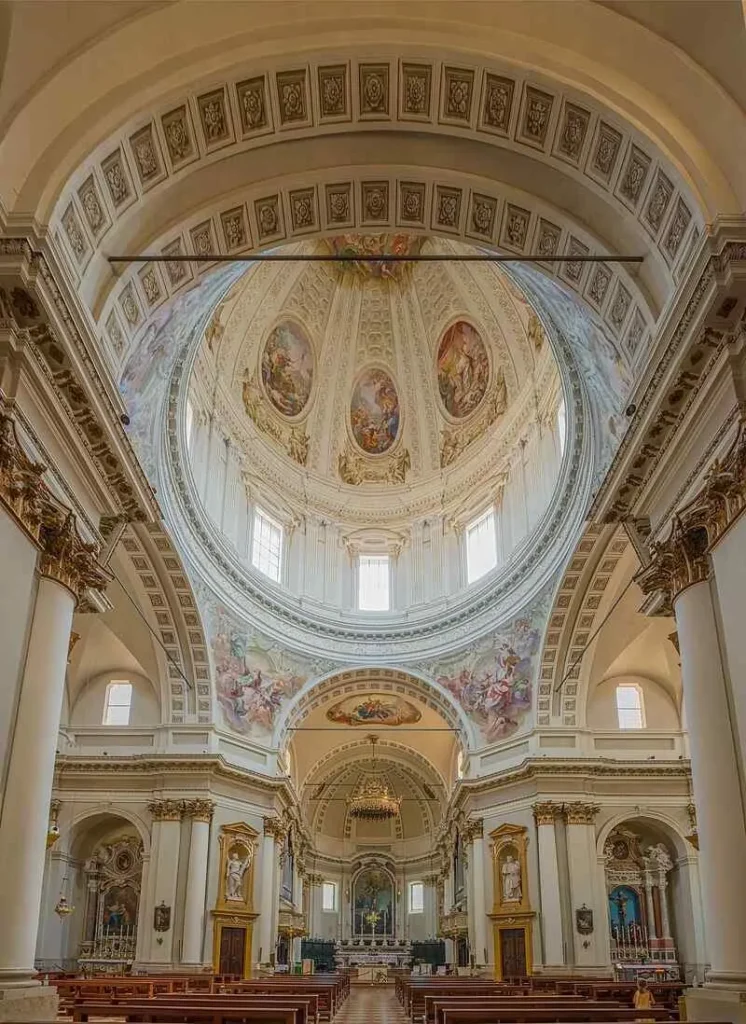
Architect: Paolo Soratini
Architectural Style: Baroque architecture
The Basilica of San Giovanni Battista in Lonato del Garda is a masterpiece of Baroque architecture, renowned for its grandeur, intricate artwork, and historical significance. The church’s design and interior details reflect a rich blend of artistic styles and a deep connection to the spiritual and cultural life of the region.
Exterior Architecture
The exterior of the Basilica of San Giovanni Battista is a stunning example of Baroque architecture, designed in the shape of a Latin cross which imparts both grandeur and a sense of spiritual elevation. Constructed from white limestone, the structure stands out beautifully against the surrounding greenery, offering a striking visual presence from both near and far. The facade, facing west, is crafted from Botticino marble and showcases the hallmarks of Baroque style. It is framed by columns that support the structure, while statues of prominent saints adorn the volutes on either side of the church entrance. These include Saint Catherine of Alexandria and Saint Barbara on the lateral volutes, adding both elegance and religious symbolism. Above the entrance, in the upper part of the facade, are niches housing statues of Saint Zeno and Saint Annone, further enhancing the spiritual significance of the design. The central door is crowned with a curvilinear tympanum, inside which is the coat of arms of the city of Lonato. This emblem, featuring a lion rampant, two keys, and three lilies, symbolizes elements of the city’s identity and pride. Dominating the basilica’s exterior is the eight-vaulted dome, another defining feature of the design. This dome, also the work of Paolo Soratini, lends the building a harmonious and elevated presence. At the top of the dome stands a golden statue of Saint John the Baptist, the basilica’s patron saint, which serves as a striking visual focal point that can be seen from a distance, drawing attention to the church’s deep religious and cultural significance.
Interior Design
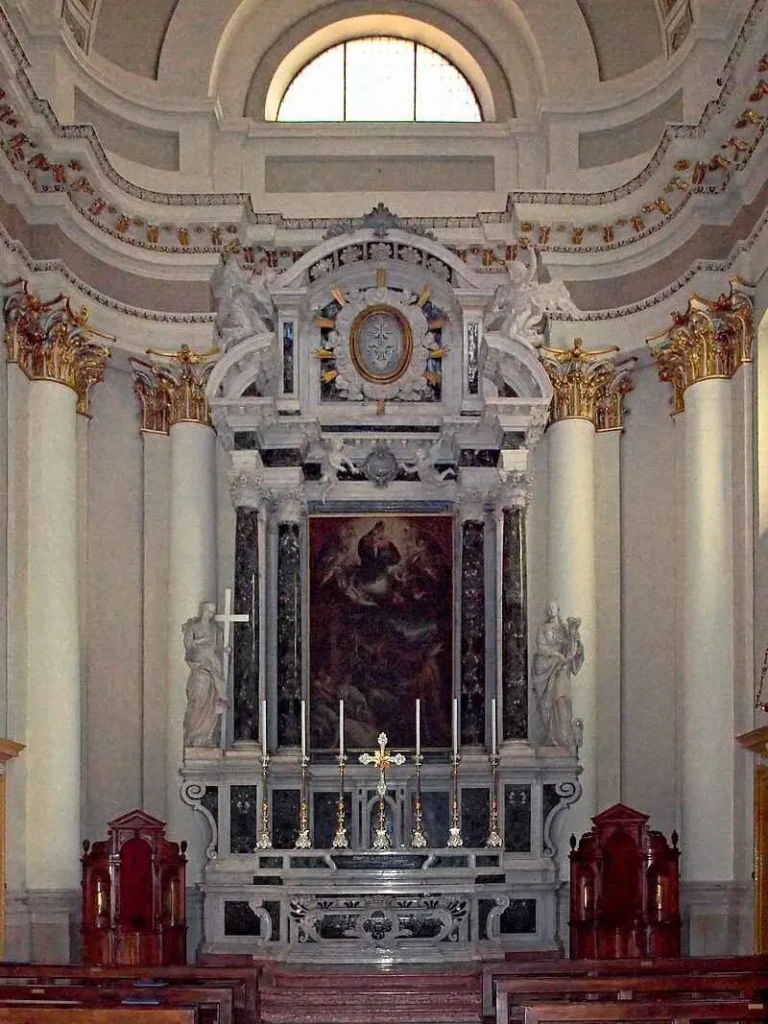
Once inside the basilica, visitors are greeted by the majestic interior, which is full of artistic treasures and religious significance. The design of the interior reflects a harmonious blend of Baroque opulence with spiritual reverence, providing a space for both contemplation and communal worship. The interior of the basilica features thirteen side altars, each dedicated to different saints, creating a richly decorated environment. The main hall is further defined by its transept, where several altars are placed, and it is from here that the spiritual and architectural significance of the church truly unfolds. The altars house altarpieces created by renowned Venetian and regional artists, and each altar is an artistic tribute to the saints honored there. Key altars and their artworks include:
Chapel of the Madonna with St. Nicholas of Tolentino: The first altar on the right side features a 1643 painting by Pietro Liberi. The painting depicts the Madonna with Saint Nicholas of Tolentino and a donor, a symbolic representation of the city of Lonato. It commemorates the city’s vow to the Madonna after the devastating plague of 1630, asking for peace and divine intervention. The putti in the painting hold the city’s coat of arms, further emphasizing the connection between the sacred and civic life of Lonato.
Chapel of Saint Zeno: This altar contains an altarpiece by Antonio Balestra from 1710, commissioned by the town’s municipality. The artwork pays tribute to Saint Zeno, the patron saint of Verona, underscoring the local significance of the saint.
Chapel of Saint Francis of Paola: The third altar on the right side features a 1741 painting by Antonio Linetti, which depicts the martyrdom of Saint Bartholomew. This is a significant representation of the saint’s devotion and martyrdom.
The right transept features the altar of Saint Theodore, with a 1574 painting attributed to Paolo Farinati, which was commissioned by the people of Lonato as a vow to protect them from the bubonic plague. This altar’s artwork is part of the basilica’s history of divine intercession during times of crisis. In addition to these altars, the altar of the Crucifix is placed in the right transept. This altar, belonging to the Confraternity of the Santissimo, is a 16th-century creation, adding a historic element to the basilica’s collection of sacred art.
Left Transept and Altars: The left transept houses the altar dedicated to the Visitation of Mary, which features an altarpiece by Pietro Perotti. Also in the left transept is the altar of the Blessed Sacrament, with a stunning 18th-century marble tabernacle by Teodoro Benedetti, considered one of the finest ornaments in the church. The large painting of the Madonna Assumed into Heaven, created by Pietro Marone, adds to the altar’s grandeur.
Other altars in the left side of the hall include the altar dedicated to Saint Luigi Gonzaga and the altar of Saint Sebastian, both adorned with Baroque statues and paintings that further enrich the church’s visual and spiritual appeal.
Dome and Frescoes
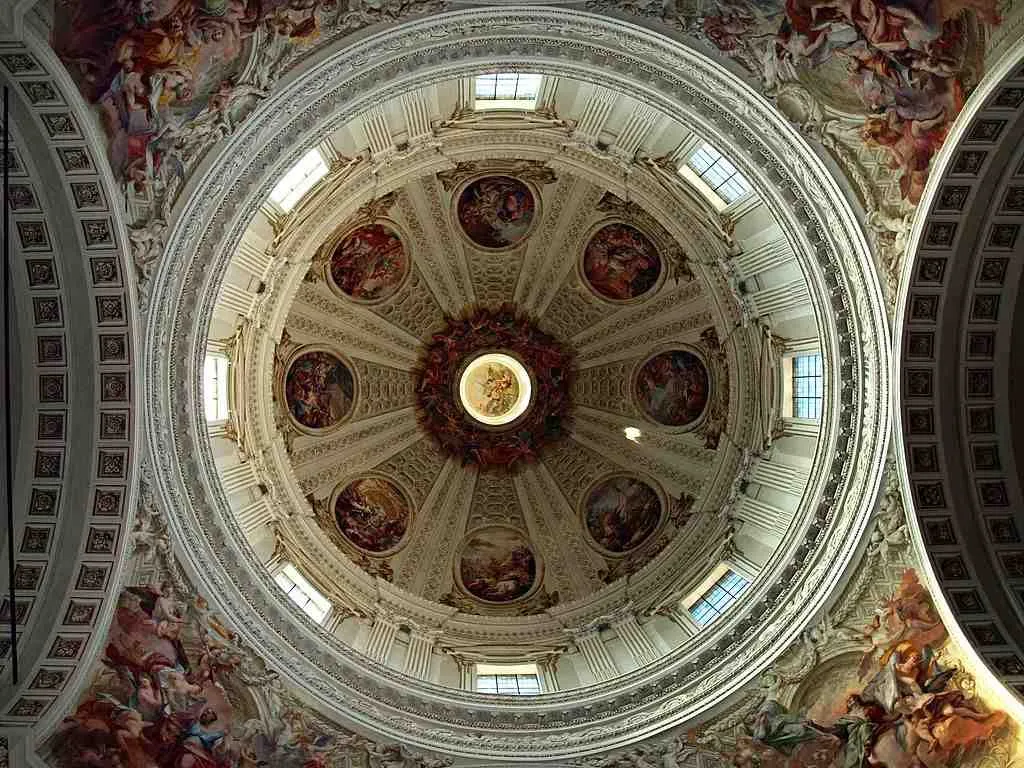
One of the most remarkable features of the church is its dome, which is painted with eight roundels that depict biblical scenes from both the Old and New Testaments. Additionally, the dome features portraits of the four evangelists, reinforcing the church’s theological and artistic depth. The frescoes, painted by Giosuè Scotti, embellish both the nave and the dome, enhancing the sacred atmosphere with vivid depictions of key biblical moments.
The Presbytery and Altarpiece
The presbytery is elevated by two steps made of red French marble, which leads up to the apse. Here, the large altarpiece by Giambettino Cignaroli (1749-1751) depicts Saint John the Baptist addressing the crowd, with Christ present among the people. The artwork is framed in an ornate marble frame, complementing the overall grandeur of the space. Adjacent to the presbytery is the sacristy, which contains a Renaissance polyptych by Bernardino Licinio (1528). This work, known as the Resurrection altarpiece, includes depictions of the Sorrowful Madonna and Saint John the Baptist in the center, further emphasizing the church’s connection to its religious history.
The Organ
The organ is positioned in the choir of the presbytery, on the right side. The instrument has a rich history, beginning with its original construction in 1778-79 by the Benedetti brothers. It was later expanded and rebuilt in 1863 by Giovanni Tonoli, who used the original pipes. The organ was further restored in 1894 by Diego Porro and Giovanni Maccarielli. It remains an important feature of the basilica, contributing to its liturgical and musical functions.
The Sacred Triduums in Memory of the Deceased
The Sacred Triduums in memory of the deceased are a unique tradition in the basilica. Since 1828, the church has held these prayers annually, where a scenic machine is set up at the altar. The machine, created by Leonardo Manzati, features angels, rays of light, and candles, enveloping the altar in a spectacular display. This tradition has become a central part of the basilica’s liturgical life, with the parishioners gathering for three days of prayer to honor and remember the deceased.
Feast Day
Feast Day
Feast Day : 24th June
The feast day of the Basilica of St. John the Baptist in Lonato del Garda, Italy, is celebrated on June 24th. This date corresponds to the feast of the Nativity of Saint John the Baptist, which is observed in the liturgical calendar of the Catholic Church.
Church Mass Timing
Yet to Update
Church Opening Time:
Open All Day
Contact Info
Address :
Basilica of St. John the Baptist Lonato del Garda
Via Tarello, 20, 25017 Lonato BS, Italy
Phone : +390309130160
Accommodations
Connectivities
Airway
Basilica of St. John the Baptist Lonato del Garda, Italy, to Leonardo da Vinci International Airport (FCO) Fiumicino, distance between 50 min (31.3 km) via A91.
Railway
Basilica of St. John the Baptist Lonato del Garda, Italy, to Martinucci Laboratory – Stazione termini Piazza dei Cinquecento, distance between 19 min (3.7 km) via Traforo Umberto I.

